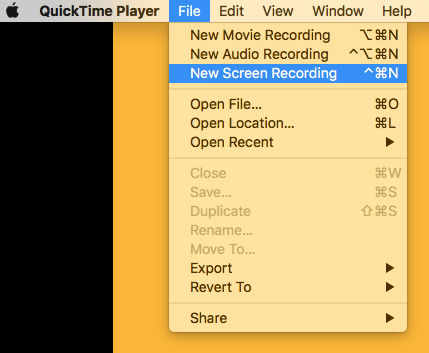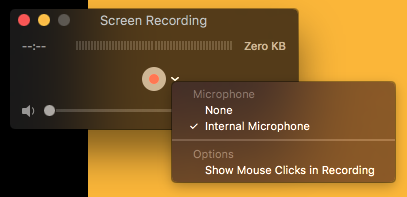How to record a presentation screencast video using Quicktime
I’m a frequent public speaker. The trend of late is for conferences to record presentations and then post them publicly later. This is a great trend, as it helps preserve and spread knowledge and expertise.
It often can take quite a while for a conference to get videos posted. I certainly don’t fault them for this; video post-processing is a time- and attention-intensive task, often made more difficult to schedule due to all-volunteer staff. For one reason or another (typically self-review for improving the presentation and my delivery) I usually need access to my talk videos more quickly than a conference can provide them.
This past August I presented speaker training at /dev/world/2016. While I was there Tony Gray, chair of the AUC, taught me how to take live screencasts of my presentations using Quicktime. This was, in its own small way, life changing for this public speaker. Thanks, Tony!
Now all y’all can benefit from Tony’s wisdom. What follows below are the steps to do this yourself. Some caveats:
- That this is possible won’t be news to a lot of people, but I’ve been doing this speaking thing for years and had never heard of or seen it from any other speaker. When Tony told me about it I had a real head-smacking “Oh, duh!” moment.
- This isn’t going to be the best or most professional quality recording, but it’s actually better than you’d think and so far it’s always been good enough for me to share the video.
- These steps are very specifically targeted for recording a conference presentation. Modify as necessary for your specific needs.
- This is for macOS and Quicktime. No, I don’t know how to do it on other platforms.
And now, those steps:
| 1. Set up your slides for presenting. Whatever software you use for this (I currently use Deckset), however you usually prefer it presented (mirrored or not), do that. | |
| 2. Fire up Quicktime Player. This comes standard on all Macs. Use your preferred method for locating/opening apps (mine’s Alfred) to start up the program. | |

|
3. Select ‘New Screen Recording’. Select this from the File menu: |

|
4. Select ‘Internal Microphone’. There’s a little dropdown menu next to the ‘Record’ button. You can select audio input here. Select ‘Internal Microphone,’ unless you know you have an external one plugged into your Mac and working. |
| 5. Click ‘Record’. Assuming everything else is ready to go (slides are ready to roll), click ‘Record’. You’d think you’re recording now, but you’re not. There’s another step first: | |

|
6. Select which screen to record. If you mirror, either screen will do. I use a lot of speaker notes, so I don’t mirror when I display my slides. Therefore I need to get the pointer to the screen which is displaying the slides (usually behind me) and click anywhere on it. And now you’re recording. |
| 7. Click back on your screen. If you don’t do this your slides won’t have focus so your clicker or other slide-changing method won’t work. I’ve learned this the hard way. Twice (so far). | |
| 8. Present. Do your presentation as usual. Please don’t forget to repeat the questions from the audience. Not only is it best practice, it also ensures that the questions end up on the recording, rather than just your out-of-context answers. | |
| 9. End recording. When you’re done speaking, locate Quicktime and click that red button again to stop the recording. There may also be a red button in your menu bar. If there is, you can click it to stop the recording. | |
| 10. Save recording. Do the usual File > Save… dance to save the file. THIS WILL TAKE A WHILE (depending on the length of the presentation), so don’t do it if you have to close your laptop and relocate soon (like when you’re packing up and making way for the next presenter). Wait until you can allow your Mac to sit undisturbed for a while. Don’t worry: as long as you don’t shut down your Mac or Quicktime that recording will sit there ready and waiting to be saved. |
That’s it! You now have a lovely screencast recording of your presentation. It will have your slides with you speaking.
After this I usually do minimal editing (trimming any unnecessary slush from either end) and then upload the video to Internet Archive along with the slides+speaker notes.
I hope you find this helpful. If you do, please send some Twitter love to my friend Tony to thank him for showing these steps to me.
📣 Like what you see? Hire me! 📣
I can bring my decades of experience and knowledge of business strategy, software development, servant leadership, and open source to your organisation.
Check out my resume then contact me today!